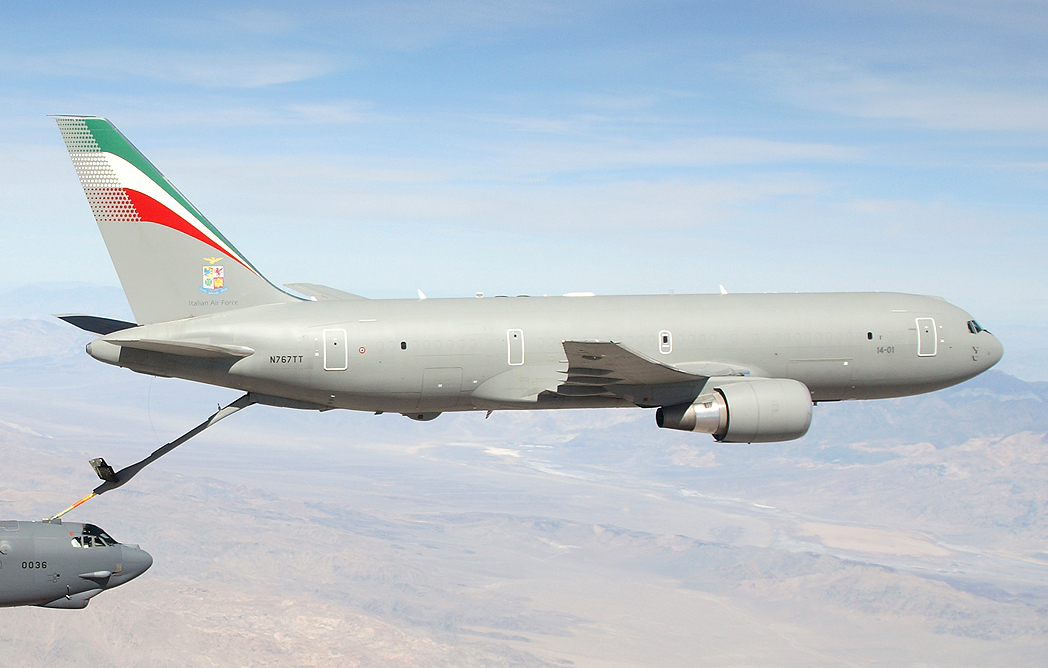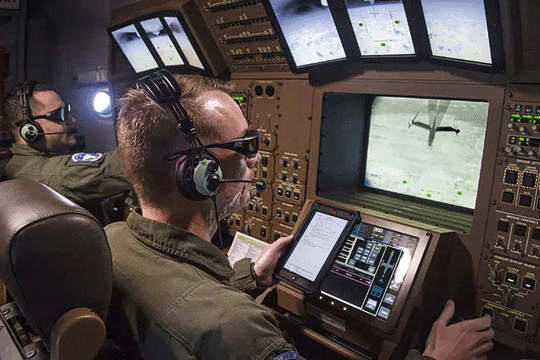
Progress of the KC-46A program

The first export KC-46A Pegasus will go to the Japan Air Self-Defense Force. The vehicle is currently undergoing its first ground tests.
On November 3, the US Department of Defense announced that work related to the KC-Y program will officially begin this year, i.e. the second of three planned phases of replacement of the air tanker fleet operated by the US Air Force. Interestingly, this statement was made when Boeing 40 handed over the production KC-46A Pegasus aircraft to the user, i.e. the machine selected as part of the first phase of the American program to create aircraft tankers, known as the KC-X.
The November declarations are part of a larger project that should determine the actual needs and determine the time for appropriate decisions to be made, which should lead to KC-Y deliveries beginning around 2028. This should be a kind of bridge between the current capabilities and the new structure that should be the result of the COP-S program. In addition to replacing another batch of KC-135 Stratotankers, it is possible that the customer will want to take the opportunity to purchase a successor to the few (58 in July 2020), but much-needed McDonnell Douglas KC-10 Extender aircraft, which have already begun to be decommissioned. The US Department of Defense is certainly also richer in experience gained from the KC-X program, which, despite the use of numerous elements that reduce risk - for example, in the form of choosing a passenger Boeing 767-200ER aircraft as a base - is still experiencing delays and technical Problems.

One of the key problems all the time remains the unsatisfactory quality of the RVS (Remote Vision System), which is an important element of the hard-coupled refueling system.
Although by the end of October this year, the manufacturer delivered the above-mentioned 40 serial KS-46A (including the first of the 4th production series), which went to both training and operational units, the program still brings losses to Boeing. According to the submitted declarations and the schedule included in the basic contract for 2011, the last of the 179 KS-46A planned for purchase was to be delivered in 2027. However, it should be noted that at the end of October 2020 there were 72 of them. Officially ordered with construction under an agreement with the US Department of Defense. Interestingly, the amount that Boeing had to invest in recent years in the elimination of detected design errors, defects and the restoration of already built aircraft is basically equal to the order for the first batch of aircraft, i.e. spent so far. This year alone, among the identified technical problems was the issue of leaking fuel lines (4,7 aircraft have already been delivered, which required urgent repairs, and work on them was carried out by June). Last year, malfunctioning cargo deck hooks forced a halt to palletized flights, a problem that was resolved by December 4,9. The KC-16A Pegasus program generated another $2019 million, according to third quarter '2020 financial statements. losses, mainly due to operational factors, such as a slowdown in assembly work on the Model 46 line (where the KC-67 is also being built before the subsequent conversion and installation of equipment for the mission) due to the COVID-767 pandemic. This is a continuation of losses from the second quarter, when $46 million was placed for the same reason. According to company representatives, there is a chance that in 19 the program will finally start to make a profit. However, this optimism may certainly be shaken if the pandemic in the United States escalates further. Despite the adversity, the work is underway, and in September the 155th serial unit was taken out of the assembly shop in Everett, Washington, with the installation of equipment and the subsequent test cycle. Still at Boeing Field near Seattle, a part of the KC-2021A can be seen awaiting completion for delivery to the customer.
Currently, the biggest and unresolved problem so far is the issue of certification of flexible refueling tanks WARP (Wing Air Refueling Pod), which are supposed to be used for refueling, including vehicles of naval aviation and some allies. This process should be completed by the end of the year. Therefore, KS-46A is still
Use only the ventral module with a flexible refueling hose, which allows you to refuel only one car. The second reason for delays is the RVS (Remote Vision System) hard-linked imaging system, which consists of a set of cameras mounted in the tail section of the KC-46A replacing the refueling hose operator in the KC-135. Inaccurate information provided to the operator can lead to a dangerous situation during the refueling procedure - he is moved to the front of the fuselage, and monitors the situation on monitors thanks to a set of cameras and other sensors. For this reason, Boeing is working on a modification of the system - the RVS 1.5 test.
began in June of this year, and in the event of a positive assessment by the US Air Force and no objections from Congress, its installation on aircraft may begin in the second half of 2021. improvement of the control software and minor fixes related to the devices used. Interestingly, the modification is temporary, since in the second half of 2023 it is planned to introduce RCS version 2.0 into operation. This, in turn, may lead to the fact that part of the KS-46A will have to be taken out of service in a relatively short time until a key element of their equipment has been replaced twice. The issue is also important for operational reasons, currently KS-46A are delegated to auxiliary tasks (such as providing multi-role combat aircraft flights between bases), but they do not replace the so-called KS-135. the first line of operations (an excellent example is the October operation of the special forces, which recaptured an American citizen detained in Nigeria, the KS-135 was used as support for the aviation component).